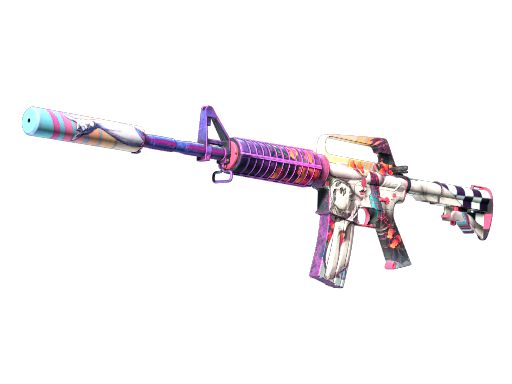BTOB Insights
Exploring the latest trends and news in business and technology.
Beyond Aesthetics: The Fascinating Journey of CSGO Skins in Today’s Market
Explore the evolution of CSGO skins and their skyrocketing market value. Discover why these digital assets are more than just eye candy!
The Evolution of CSGO Skins: Trends and Values Over Time
The world of CSGO skins has undergone significant transformations since the game's launch in 2012. Initially, these digital items served merely as cosmetic upgrades, allowing players to customize their weapons. However, as the community grew and the game developed, so did the trends surrounding skin usage and collection. From the early days of basic color variations, the introduction of unique skins with intricate designs and themes took the community by storm. Notably, the release of rare skins, such as the Dragon Lore and Karambit, catalyzed a new wave of interest, showcasing the potential value these items could hold on the marketplace.
As players began to recognize the value behind these skins, the demand surged, leading to the emergence of various trading platforms and communities dedicated to skin exchanges. Market trends have shown that certain skins can appreciate dramatically in price over time, leading to substantial profits for savvy traders. For instance, a skin that was originally purchased for a few dollars could see its value soar into the hundreds as it gains popularity or rarity. This evolution reflects not only the changing perceptions of skins as mere cosmetics but also their status as collectible items, akin to trading cards. As we look ahead, the future of CSGO skins will likely see continued innovation and shifts in trends, further enhancing their importance within the gaming culture.

Counter-Strike, originally a mod for Half-Life, has evolved into one of the most iconic first-person shooter games in the world. Players compete in teams to complete objectives, such as bomb defusal or hostage rescue. The excitement continues with the latest iteration of the franchise, where players can participate in challenges like CS2 Guess to enhance their gameplay experience.
How to Evaluate CSGO Skins: A Guide for Collectors
When it comes to evaluating CSGO skins, collectors need to consider multiple factors that influence both their aesthetic appeal and market value. Start by examining the skin's rarity, which is classified into various tiers such as Consumer, Industrial, Mil-Spec, Restricted, Classified, Covert, and Exotic. Each tier reflects the skin's scarcity and can significantly affect its price on the market. Additionally, pay attention to the condition of the skin, with grades ranging from Factory New to Battle-Scarred, as this will also influence the overall valuation.
Another important aspect to consider is the market trends and how demand fluctuates over time. To make a well-informed decision, it’s helpful to consult various trading platforms and track the price history of CSGO skins. You can utilize tools and websites that provide statistics on skin prices, recent sales, and community-driven insights to gauge which skins are coveted and likely to appreciate in value. Don’t forget to assess unique features like stickers, souvenir skins, and limited editions, as these can add significant value to your collection.
Why Are CSGO Skins More Than Just Aesthetics? Exploring Their Impact on Gaming Culture
The world of CSGO skins extends far beyond mere aesthetics; they represent a significant aspect of gaming culture that influences player identity and community dynamics. These virtual items are not just decorative elements; they serve as symbols of status, allowing players to showcase their achievements and personal style. As players collect, trade, and showcase their skins, they engage in a complex economy that reflects their commitment to the game. This has led to a boom in the CSGO skin market, where rare and desirable skins can fetch hefty sums, transforming the way gamers perceive and interact with their favorite titles.
Furthermore, the impact of CSGO skins reaches into the competitive scene, where certain skins can become iconic representations of teams and players. Tournaments often see players using specific skins to create brand recognition, and fans often rally behind their favorite players based on the skins they wield. This deep connection illustrates how CSGO skins play a vital role in fostering community engagement and loyalty—players are not merely consumers but active participants in a thriving subculture that celebrates creativity and individual expression.